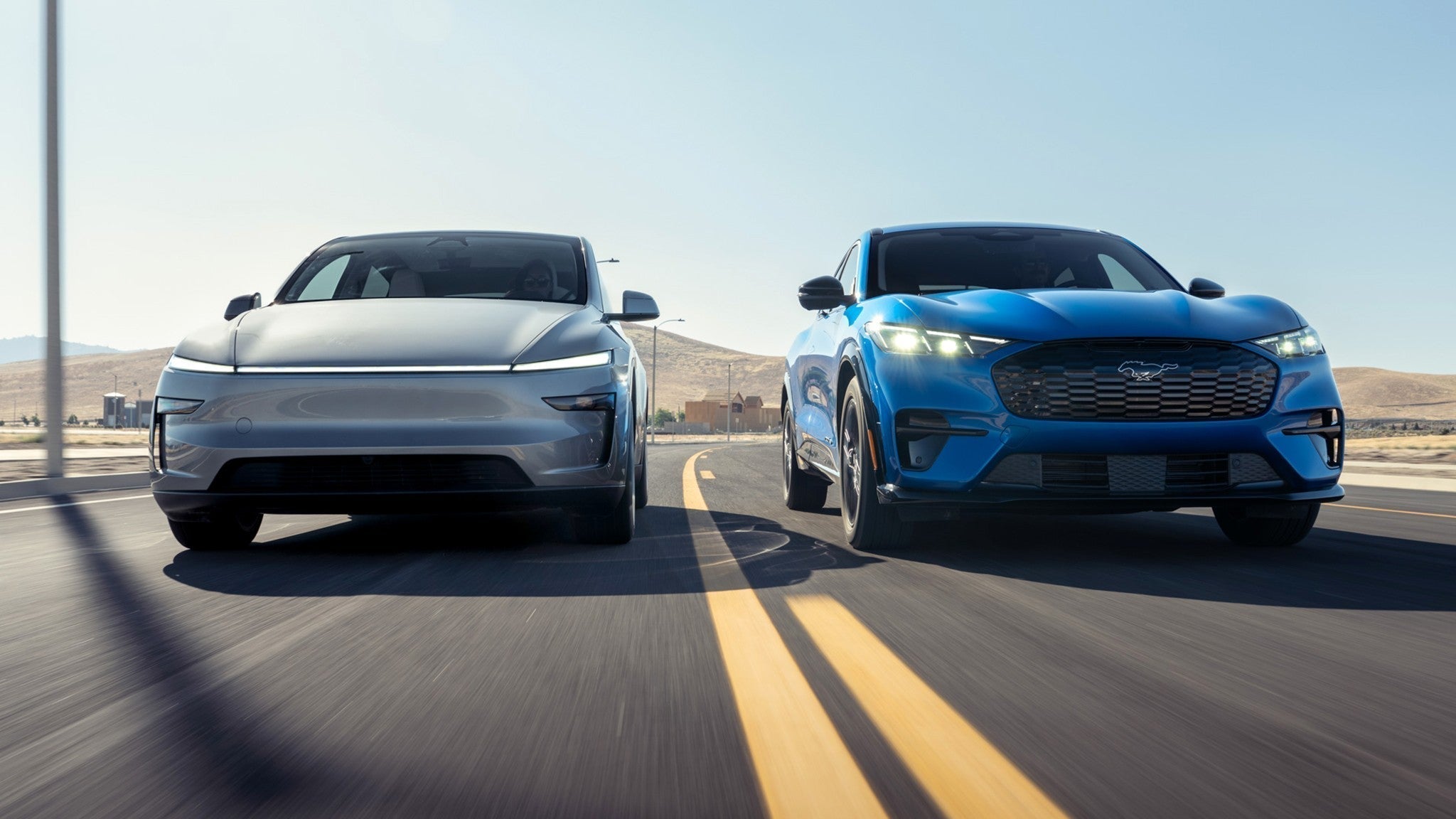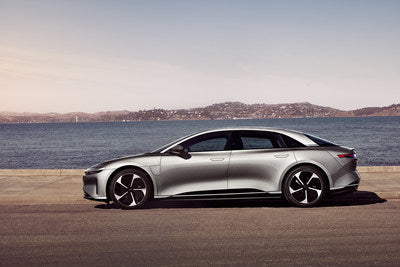The 2026 Tesla Model Y and the 2025 Ford Mustang Mach-E continue their rivalry in the growing EV crossover segment, representing two of the most influential players in the electric SUV market. Both vehicles appeal to different types of buyers, balancing range, performance, styling, and technology.
Design and Styling
Tesla Model Y (2026): Tesla maintains its minimalist design and aerodynamic profile, focusing on efficiency rather than radical styling changes. Updates for 2026 are subtle, with refinements in lighting and exterior trims, keeping the Model Y recognizable while improving energy efficiency.
Ford Mustang Mach-E (2025): Ford leans into its sporty, muscle-inspired heritage, creating a design that appeals to style-conscious buyers. The Mach-E blends aggressive lines with a crossover silhouette, maintaining Mustang cues like the fastback roofline and sculpted hood.

Performance and Range
Model Y: The 2026 Model Y delivers up to 330 miles of range on a single charge, benefiting from dual-motor all-wheel drive for rapid acceleration. Its performance balances speed and efficiency, making it a strong contender for long-distance commuting or highway driving.
Mach-E: The Mustang Mach-E offers around 312 miles of range, slightly less than the Model Y, but its GT performance variant emphasizes sporty driving dynamics, with sharper handling and quicker 0-60 times.
Charging and Technology
Tesla Model Y: One of Tesla’s strongest advantages is access to its vast Supercharger network, ensuring fast, convenient charging across North America. The Model Y also offers advanced driver-assistance features, including Autopilot and optional Full Self-Driving (FSD).
Mach-E: The Mach-E uses the CCS charging standard, and owners can expand access to Tesla Superchargers through adapters. Inside, it features Ford’s BlueCruise hands-free driving system and a SYNC infotainment interface that blends digital and physical controls.
Interior and Practicality
Model Y: Tesla offers a spacious cabin with a 15-inch central touchscreen, delivering a minimalist yet functional interior. The Model Y prioritizes versatility, with configurable cargo space and clever storage solutions.
Mach-E: Ford’s interior combines a 15.5-inch portrait display with a more traditional cabin feel. Physical buttons complement digital controls, creating user-friendly interactions for drivers and passengers.
Price and Value
Tesla Model Y: Starting around $44,000, the Model Y offers strong value considering its range, charging network, and tech features.
Ford Mustang Mach-E: The Mach-E starts at approximately $43,000, providing competitive pricing for buyers drawn to Mustang styling and Ford’s extensive dealership support.

Verdict
The 2026 Tesla Model Y excels in range, charging convenience, and technological integration, making it ideal for buyers seeking cutting-edge EV features. The 2025 Mustang Mach-E impresses with sporty styling, engaging performance, and brand legacy, appealing to those who value driving experience and design heritage.
Ultimately, the choice comes down to whether a buyer prioritizes Tesla’s technology and Supercharger access or Ford’s dynamic driving experience and recognizable Mustang character. Both vehicles remain top contenders in the EV crossover segment.
| Specification | 2025 Ford Mustang Mach-E Premium eAWD | 2026 Tesla Model Y Long Range AWD |
|---|---|---|
| Base Price | $46,990 | $50,630 |
| Price as Tested | $58,670 | $63,630 |
| Vehicle Layout | Front- & rear-motor, AWD, 5-pass, 4-door electric SUV | Front- & rear-motor, AWD, 5-pass, 4-door electric SUV |
| Total Power | 365 hp | 397 hp |
| Total Torque | 500 lb-ft | 389 lb-ft |
| Motors | F: permanent-magnet motor, NA hp, 111 lb-ft R: permanent-magnet motor, NA hp, 387 lb-ft |
F: induction motor, 117 hp, 124 lb-ft R: permanent-magnet motor, 280 hp, 265 lb-ft |
| Battery | 88.0-kWh NCM lithium-ion | 79.5-kWh NCA lithium-ion |
| Transmissions | 2 × 1-speed fixed ratio | 2 × 1-speed fixed ratio |
| Gear Ratio (F/R) | 10.01:1 / 9.72:1 | 9.04:1 / 9.04:1 |
Recommend Reading: Tesla’s Model Y Refresh Falls Flat Amid Mounting Challenges for the EV Giant








Share:
Hyundai Questions Chinese EV Pricing Advantage Amid Subsidy Concerns
Tesla Leads Industry Price Cuts as U.S. EV Sales Hit Record Highs